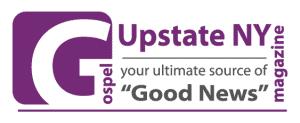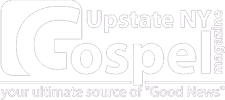Snoring affects millions of Americans, and of those approximately 67% may have sleep apnea (if breathing is stopped for more than 5 times per hour). Snoring is no longer seen as a nuisance for the sleep partner. The vibrations in the back of the mouth is a result of a narrowed air passage, whereby the soft tissues flap like a flag in the wind. These vibrations can cause irritation; inflammation of important arteries that carry oxygen to the brain. When this happens, the inside space of these arteries becomes narrower, atherosclerotic plaques can develop, cutting back the amount of oxygen available to reach the brain (a traffic jam for red blood cells).
What are some of the pitfalls of not getting enough oxygen when we’re trying to sleep?
A major hormonal imbalance ensues that often leads to chronic fatigue (and auto accidents), over-eating/ obesity, aggressiveness, stroke and in men- E.D.
What treatments are available to combat sleep disruptive disorder?
The CPAP machine has been used for many years. It forces humidified air into the nasal or oral cavities and keeps the airway open. Usually a night wired up (not unlike a Christmas tree) at a sleep clinic is necessary to monitor sleep habits and oxygen levels. The CPAP machine works but it is cumbersome to sleep with, it is a bit noisy and the hose must travel with you when you turn from side to side.
Nasal strips work by applying tension to the nostrils. This slightly opens up the nasal airway, but if there are obstructions in the back of the mouth, there can still be some problems.
Cutting away some parts of the soft tissues in the back of the mouth (ether with a scalpel or electrosurg)- very painful and not totally effective.
MAD (Mandibular Advancement Devices) appliances. Dentists can have a lab fabricate this device that essentially repositions the lower jaw forward, thus opening the airway in the posterior of the mouth. I never ascribed to this protocol, because I know that my jaw/ TMJ would not appreciate being held in that position for 6 to 8 hours.
On more of the surgical side the equation is the orthognathic repositioning of the upper jaw. This is a highly intricate procedure that requires at least 6 months’ healing time and, here again, is not full-proof. It is a surgical 
Dentists are in a great position to diagnose and in some cases treat these problems with airway management. Helping patients improve their sleep can profoundly improve their health, their quality of life and the well-being of their loved ones.
I have incorporated an interesting protocol in my practice. It’s called the NightLase -Snoring and Sleep Apnea Reduction Therapy protocol, a unique approach to treatment using the Lightwalker dental laser with a proprietary protocol and handpiece.
I was one of only 10 laser dentists (9 from U.S and 1 from Canada) to study this adjunct to my Lightwalker laser system in Irvine, California, earlier this year. We all took turns practicing using the handpiece as well as having it done to ourselves. There is a warm sensation and afterwards, it feels like a mild sore throat. The procedure takes 20 minutes and is repeated two more times within the next month and a half. After that, one is good for 6 months to a year. If a person stops smoking, the recovery is even more dramatic.
Nightlase uses the photothermal (laser light heating the tissues just enough to cause beneficial cellular changes) capabilities of the Erbium laser to convert and initiate the formation of new collagen in mucosal tissue in the oropharynx, soft palate and uvula. The heat generated by the laser allows the collagen to re-form resulting in a tightening of the soft palate and surrounding tissues. This causes a rise of the soft palate and tightening the tissues of the oropharynx resulting in an improvement in the airway. The outcome can be seen in the before and after images above.
The treatment is indicated for cases where the patient has been diagnosed with snoring or sleep apnea and either cannot or chooses not to wear an appliance or CPAP device. It also can be co-therapy with those devices and represents a less invasive alternative to current surgical options because it doesn’t rely on chemical treatment or even anesthesia.
NightLase has an extremely high success rate in producing a positive change in sleep patterns. Research has shown it can reduce and attenuate snoring, and provides an effective, non-invasive way to lessen the effects of sleep apnea. As with any treatment, there are potential risks with laser treatment. However, the risks are minimal and certainly less than alternative therapies if the protocol is followed correctly.
Previous studies have been performed in Europe over the last four years, but no studies had been done in the U.S. Thus far we were the first users of this protocol in the U.S. and a pilot clinical study was undertaken by our group. This small initial clinical study has been undertaken with results tabulated after a completed course of treatment and observations recorded on snoring, sleep quality, weight loss and sleep partners’ comfort. The results showed a 30-80% improvement in snoring, sleep quality and sleep partner satisfaction. Participants included an obese patient, two smokers and 2 patients with diagnosed obstructive sleep apnea. The lower results were from the smokers and the obese patient.
Follow up studies with larger numbers of subjects will use Polysonography both before and after treatment and address OSA (Obstructive Sleep Apnea) more specifically, but thus far NightLase appears to be an exciting new option for dentists using the LightWalker laser.
Sleeplab.com offers a special smartphone App. It records your sleep routine for 7 hours. The results can be sent to their company for an evaluation.
Dr. Rodney O’Connor
LASER Dentistry
521 Beahan Rd. Rochester, NY 14624
www.droconnor.com








